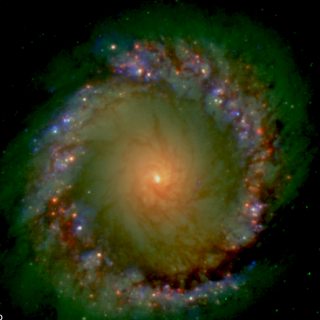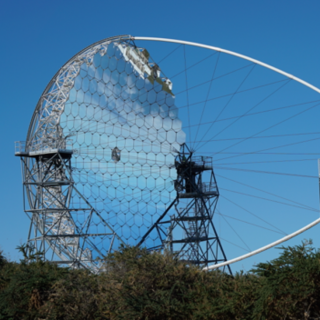Bibcode
Ahnen, M. L.; Ansoldi, S.; Antonelli, L. A.; Arcaro, C.; Babić, A.; Banerjee, B.; Bangale, P.; Barres de Almeida, U.; Barrio, J. A.; Bednarek, W.; Bernardini, E.; Berti, A.; Biasuzzi, B.; Biland, A.; Blanch, O.; Bonnefoy, S.; Bonnoli, G.; Borracci, F.; Bretz, T.; Carosi, R.; Carosi, A.; Chatterjee, A.; Colin, P.; Colombo, E.; Contreras, J. L.; Cortina, J.; Covino, S.; Cumani, P.; Da Vela, P.; Dazzi, F.; De Angelis, A.; De Lotto, B.; de Oña Wilhelmi, E.; Di Pierro, F.; Doert, M.; Domínguez, A.; Dominis Prester, D.; Dorner, D.; Doro, M.; Einecke, S.; Eisenacher Glawion, D.; Elsaesser, D.; Engelkemeier, M.; Fallah Ramazani, V.; Fernández-Barral, A.; Fidalgo, D.; Fonseca, M. V.; Font, L.; Fruck, C.; Galindo, D.; García López, R. J.; Garczarczyk, M.; Gaug, M.; Giammaria, P.; Godinović, N.; Gora, D.; Guberman, D.; Hadasch, D.; Hahn, A.; Hassan, T.; Hayashida, M.; Herrera, J.; Hose, J.; Hrupec, D.; Hughes, G.; Ishio, K.; Konno, Y.; Kubo, H.; Kushida, J.; Kuveždić, D.; Lelas, D.; Lindfors, E.; Lombardi, S.; Longo, F.; López, M.; Majumdar, P.; Makariev, M.; Maneva, G.; Manganaro, M.(Instituto de Astrofísica de Canarias, 38200 La Laguna, Tenerife, Spain; Universidad de La Laguna, Dpto. Astrofísic; Mannheim, K.; Maraschi, L.; Mariotti, M.; Martínez, M.; Mazin, D.; Menzel, U.; Mirzoyan, R.; Moralejo, A.; Moretti, E.; Nakajima, D.; Neustroev, V.; Niedzwiecki, A.; Nievas Rosillo, M.; Nilsson, K.; Nishijima, K.; Noda, K.; Nogués, L.; Paiano, S.; Palacio, J.; Palatiello, M.; Paneque, D. et al.
Referencia bibliográfica
Astronomy and Astrophysics, Volume 603, id.A29, 12 pp.
Fecha de publicación:
7
2017
Revista
Número de citas
42
Número de citas referidas
38
Descripción
Context. PKS 1510-089 is one of only a few flat spectrum radio quasars
detected in the very-high-energy (VHE, > 100 GeV) gamma-ray band. Aims: We study the broadband spectral and temporal properties of the
PKS 1510-089 emission during a high gamma-ray state. Methods: We
performed VHE gamma-ray observations of PKS 1510-089 with the Major
Atmospheric Gamma Imaging Cherenkov (MAGIC) telescopes during a long,
high gamma-ray state in May 2015. In order to perform broadband modeling
of the source, we have also gathered contemporaneous multiwavelength
data in radio, IR, optical photometry and polarization, UV, X-ray, and
GeV gamma-ray ranges. We construct a broadband spectral energy
distribution (SED) in two periods, selected according to VHE gamma-ray
state. Results: PKS 1510-089 was detected by MAGIC during a few
day-long observations performed in the middle of a long, high optical
and gamma-ray state, showing for the first time a significant VHE
gamma-ray variability. Similarly to the optical and gamma-ray high state
of the source detected in 2012, it was accompanied by a rotation of the
optical polarization angle and the emission of a new jet component
observed in radio. However, owing to large uncertainty on the knot
separation time, the association with the VHE gamma-ray emission cannot
be firmly established. The spectral shape in the VHE band during the
flare is similar to those obtained during previous measurements of the
source. The observed flux variability sets constraints for the first
time on the size of the region from which VHE gamma rays are emitted. We
model the broadband SED in the framework of the external Compton
scenario and discuss the possible emission site in view of
multiwavelength data and alternative emission models.
Proyectos relacionados

Centros de Galaxias a Escalas de Parsecs y Técnicas de Alta Resolución Espacial
Proyecto enfocado al estudio en el IR del núcleo de las galaxias más cercanas con resoluciones espaciales en el rango de 1 a 10 pc. Estas resoluciones espaciales, accesibles con los grandes telescopios de tierra usando técnicas frontera de observación, son por primera vez comparables a las que se obtienen rutinariamente con HST en el óptico y VLBI
Almudena
Prieto Escudero

Estrellas Binarias
El estudio de las estrellas binarias es una parte esencial de la astrofísica estelar. Una gran parte de las estrellas de nuestra Galaxia y de otras galaxias se ha formado en sistemas binarios o múltiples, por lo que entender la estructura y evolución de estos sistemas es importante desde el punto de vista estelar y galáctico. Un aspecto en el que
Pablo
Rodríguez Gil

Astrofísica de Partículas
El Grupo de Astrofísica de Partículas del IAC participa activamente en tres grandes colaboraciones internacionales de astrofísica de muy altas energías: AMS-02 (Alpha Magnetic Spectrometer), los telescopios de radiación Cherenkov MAGIC I y II y el Cherenkov Telescope Array Observatory ( CTAO). Además, participamos en el ASTRI mini-array, el
Mónica Luisa
Vázquez Acosta

Astrofísica de Partículas
El Grupo de Astrofísica de Partículas del IAC participa activamente en tres grandes colaboraciones internacionales de astrofísica de muy altas energías: AMS-02 (Alpha Magnetic Spectrometer), los telescopios de radiación Cherenkov MAGIC I y II y el Cherenkov Telescope Array Observatory ( CTAO). Además, participamos en el ASTRI mini-array, el
Mónica Luisa
Vázquez Acosta